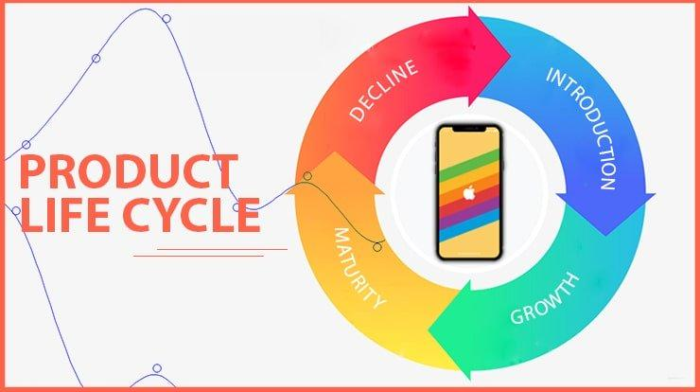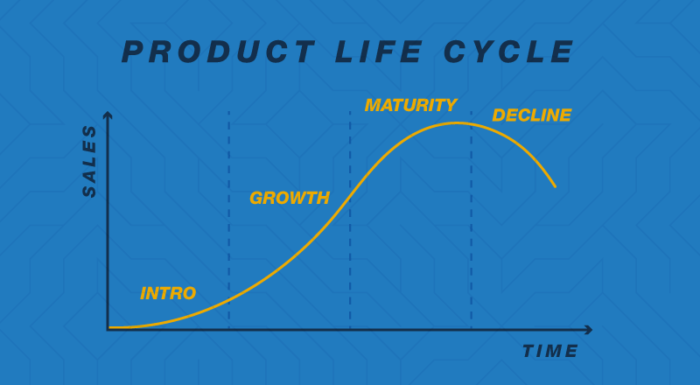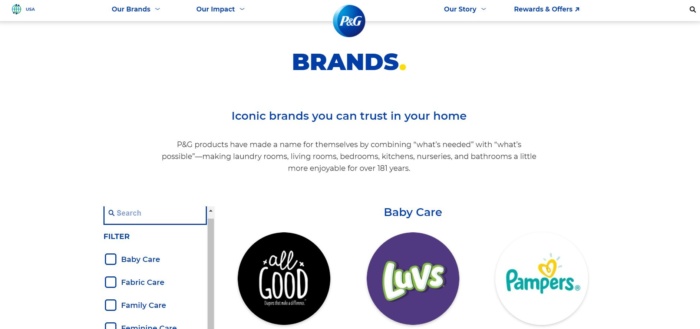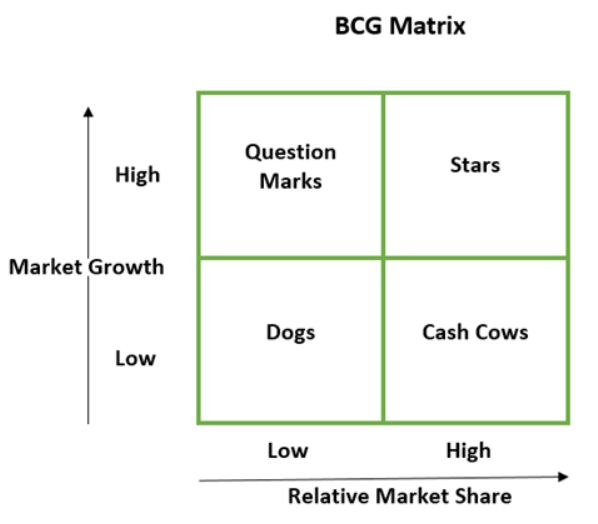
If you work in sales and marketing, knowing about the Product Life Cycle model is almost mandatory. The model describes the stages a product goes through in its journey from creation to discontinuation.
Why do you need to know this?
Because it helps you understand why some products are only popular for a few years and others never lose appeal. Products in different stages of the cycle also demand different marketing strategies, be that for physical products or for services.
Understand the Product Life Cycle and you’ll be able to keep products fresh and relevant for longer. You’ll be able to stave off decline, ensuring your products generate as much revenue as possible.
In this article, we’ll help you understand the cycle, its stages, examples, and how to employ this concept. So make sure to read this article until the end!
What Is the Product Life Cycle?
The Product Life Cycle is a management tool that makes it possible to analyze how a product behaves from its development to its withdrawal from the market. It covers every stage of growth, from launch through to adoption, and sales maturity.
It is like a product journey, or to refer to a more well-known example in marketing, the customer journey.
The mind behind this concept is Theodore Levitt, a German economist who lived in the United States and worked at the celebrated Harvard Business School.
Levitt proposed a five-stage model that he named the Product Life Cycle.
The stages are development, introduction, growth, maturity, and decline.
Before I explain each of them, it’s interesting to understand why Levitt thought defining this model would be useful.
During his research, he discovered something that seems obvious but hadn’t been mapped until then: the characteristics of a product change a lot during its life cycle.
All the strategies surrounding a product need to consider the specific issues and characteristics of each of these stages.
This applies to sales and marketing, but also to product development and decision-making in the management sphere.
For example, when is the right moment to invest so a product explodes in the market?
When is it time to step on the brakes and maybe even replace an item that was very successful with something new?
These are the questions you can answer with a Product Life Cycle analysis.
A Note on Product Life Cycle Stages
Before I describe each of the Product Life Development Cycle stages below, it’s important to note that some definitions have different numbers of stages. Some have four and ignore the development phase. Others have six and include a saturation phase. Levitt’s original diagram has four stages, but I’m going to add an introduction phase between his development and growth stages.
That’s because there are hundreds of products that have finished a development phase and been released to market, but never catch on and start growing. When they are first introduced to the market, some products — particularly innovative ones — need very specific marketing strategies to help them reach the growth stage. Ignoring this fact may hamper your product marketing efforts.
The 5 Stages of the Product Life Cycle


It’s time to explore more deeply the Product Life Cycle model.
Now that we know the stages, we’ll the characteristics of each of them, and also the best practices to achieve your marketing goals.
1. Development Phase of the Product Life Cycle
Product development is always a leap into the unknown. Companies can spend millions of dollars on product research and development, but there’s no guarantee the product launch will be successful.
At this stage, companies are spending money on the product without corresponding revenue. Proposals are made, tests carried out, hypotheses validated, and changes implemented.
This stage is naturally integrated into the process of startup companies but is not restricted to them. For example, an automobile manufacturer won’t launch a new car without first having an intensive project development phase. The only difference is that established companies are able to fund this phase from revenue generated by other products.
To give you a real-life example, let’s look at the collection of leggings for dogs that Walkee Paws released in 2018.

Given the innovative nature of this product, we can imagine that this launch was preceded by careful planning and research, which resulted in the shape of the pieces, the material used, and the patterns selected.
There may also have been some initial promotional efforts, too. When a product is in development, it doesn’t require intensive sales efforts, but some level of promotion may be required if the product is new.
Imagine the success potential of a marketing campaign from Walkee Paws announcing this novelty to dedicated dog lovers. It could involve teasing posts on social networks, generating curiosity, and encouraging engagement. There may also be press releases, billboards, or even interactive campaigns on the streets.
The fact is that the company must consider all this even during the development stage.
2. Introduction Phase of the Product Development Life Cycle
Once you have created a product and it’s ready for launch, you move into the introduction phase of the Product Life Cycle.
Launching a new product is a huge marketing endeavor. You’ll need to carve out a target market and invest significantly to reach them with broad awareness campaigns. TV ads are a popular choice at this stage. You only need to turn on a TV for a few minutes to see ads for a new flavor of soda, a different motorcycle model, and a smartphone that promises new and superior features.
It is no accident that this stage of the Product Development Life Cycle is the one that demands the most marketing investment from the company. In fact, it is not uncommon to be in the red at this stage, even if sales are already trickling in. Costs will be even larger if you are the first company bringing a new product to market. First movers may have an advantage, but they pay for it financially. It’s why many companies wait until a market has already been established before launching a new product.
Reduce costs by defining the target audience and persona that represents the ideal customer profile for your products.
This exercise makes it possible to optimize your marketing investments, using the right platforms to convey the best message and reach the exact audience you want.
You can also use inbound marketing to reach early adopters.
3. Growth Phase of the Product Life Cycle
The next stage is the growth stage. By now, sales of your product should be soaring and it will start becoming an established product in the market.
Of course, your success will attract competitors. The speed at which competitors react will depend on the market you have entered. In a crowded market, competitors will react fast. If the market is uncrowded, however, you may be able to continue to grow without much competition.
Inevitably, however, you will need to continue investing heavily in marketing to continue growth.
Even though you’re experiencing growth, many companies still fail at this stage and their products’ sales decline without having ever experienced maturity.
You might remember a beer brand that made fun TV ads with a short and chubby actor with a mustache as the protagonist. For a long time, it was one of the leading brands, and the advertisements generated comments on the only social network in existence back then: word-of-mouth. The product is still in the market, and there is no news of changes to its formula, but it was swallowed by the strong competition in the industry.
So the lesson is clear: if a product is in the growth stage, it is important to have a strategy to keep it there even as new competitors start fighting for its audience.
4. Maturity Phase of the Product Life Cycle
Maturity is the peak and the highest point of the cycle. It’s when the product reaches its maximum potential and sales and begins to stabilize. That doesn’t mean your sales won’t grow, you just won’t experience the same rapid levels of growth as before.
That may sound disappointing, but this stage comes with plenty of benefits. You will have undoubtedly become much more efficient, which will lead to reduced production costs. You can also spend less on marketing since you have an established market.
The challenge at this stage is to maintain good results and continue to beat your competitors.
There isn’t a simple way to make this happen, but it’s crucial you take action. All the famous brands you can think of are where they are today because they invested in this stage.
For example, Coca-Cola doesn’t stop advertising even though it “doesn’t depend on marketing.” The company understands that brands are not forever, being subject to market instabilities and behavioral changes in the audience.
5. Decline Phase of the Product Life Cycle
Eventually, even the most established products see their revenue dry up and popularity wane. It’s interesting to imagine the end of a company like Coca-Cola, a company with over 100 years of existence and so much financial success.
But even Coca-Cola will end one day. Maybe not the company, perhaps, but its main product. This might take 100, 200, or even 1000 years. It’s impossible to predict. But every product reaches the end and concludes its life cycle.
When that happens, the company must recognize the painful truth shown in its performance indicators and take one of several options. You can choose to discontinue the product, find a new use for it, sell the product or company, or tap into a new market by creating a new product.
Carefully weigh the costs and benefits associated with each option. There is no shame in retiring a product, especially if your company is already investing in new, innovative products to launch.
Why It’s Important to Understand the Product Life Cycle
If you’ve made it this far, you hopefully understand the concept of the Product Development Life Cycle and the characteristics of each of its stages. You should also understand why it’s important to apply this model to your business.
To eliminate any questions, here are the main advantages and benefits of what adherence to the model can do:
- allow decision-making with better support
- optimize marketing investments
- qualify sales efforts
- offer more control over results
- give better long-term strategic planning
- offer better organization and process management
- provide more longevity for products
- give more appropriate preparation to face competition
- leading the market becomes a feasible goal
What Factors Affect the Product Life Cycle?
There are a lot of things in your power you can do to influence how your product moves through the product life cycle. Unfortunately, there are also a lot of things you can’t control that will impact how your product performs.
Market Competitiveness
Competitive markets can be very hard to enter and may mean your product struggles to get out of the introduction phase. Barriers to entry play a role. While it may be harder to enter a market with high barriers to entry, your product will probably have a long life cycle if it becomes established. The same may not be true for markets with low barriers to entry that make it easier for competitors to copy your product.
Economic Forces
Sometimes the world will transpire to work against your product. A recession or global pandemic can cut a cycle short. It can also introduce rapid changes in consumer behavior that can impact your product’s life.
Changes in Technology
Rapid changes in technology can drastically shorten the product life cycle — especially if you’re unable to adapt. Just look at how the internet and video streaming destroyed Blockbuster.
There’s not much you can do if a person or company invents a new technology or a dramatically better way of doing something. All you can do is react as best you can.
How to Use the Product Life Cycle to Improve Your Marketing Strategies and Extend Your Product’s Life
The first step to using the Product Life Cycle to improve your marketing strategy is to understand what stage you are in. By understanding each stage of the cycle and comparing them with your product’s performance, you can accurately identify where your product lies.
Establish Authority Early
Establishing authority is key during the introduction phase. Whether you are positioning your product as a cheaper, more effective, or more environmentally-friendly alternative, it’s key to get this across in your messaging. The better you can do this, the quicker you can reach the growth phase and the longer you should stay there.
Tailor Your Pricing Strategy
Your pricing strategy should be fluid and tailored to the specific part of the life cycle your product sits in. For example, you may want to offer lower prices in the early stages, raise prices during the growth and maturity stages, and then lower prices again during the decline.
Tailoring your pricing may help your product continue to grow. For example, discounts are a great way to extend the longevity of a product and encourage even more people to buy it.
Introduce New Features
Products that don’t innovate by introducing new features won’t keep growing for long. Soon the market will saturate and they will decline. Knowing this, you should invest heavily in new features during the growth and maturity phases of the product lifecycle. In doing so, you can experience rapid growth all over again.
The iPhone is a great example of this. Continual investment in camera quality, screen size, and even the App Store has allowed the product to keep growing. Even the way Apple has developed the positioning of the iPhone has led to sustained growth. By focusing on privacy, something that hasn’t changed the physical features of the product at all, Apple has been able to carve out a new market.
What Are the Limitations of the Product Life Cycle?
The biggest criticism of the product life cycle is that it doesn’t predict how long each stage lasts. As a result, you can’t use the different stages to forecast sales with any great accuracy.
What’s more, some products take significantly longer to decline than others.
Finally, product life cycle stages risk becoming something of a self-fulfilling prophecy. Anticipating that their products may soon decline, product managers may stop giving them their full attention, thereby bringing about their decline.
Does the Product Life Cycle Only Apply to Products?
This is an interesting question about the model.
On one hand, the idea that the cycle works better for physical products is correct considering its characteristics. On the other hand, it’s possible to be creative and think about adaptations of the model.
Let’s take a large company with subsidiaries in different towns as an example.
Each one of these units may be considered a product when applying the Product Development Life Cycle model; all you have to do is analyze each one’s performance individually.
Another example is a company with many brands, each with its own products.
To understand this better, take a look at the Procter & Gamble website, where you will see that the company has several active brands in the USA market.

In which stage of the cycle is each of these brands? Are they planning new brands that are currently in the development stage?
To conclude, let’s look at another example.
Could services replace products in the model proposed by Theodore Levitt?
Depending on the activity the company performs, this is perfectly possible. Let’s think about a home renovation company, for example.
It may offer a great variety of construction services, such as installing floors and tiles, painting, plastering, providing electric and hydraulic works, masonry, and more.
When using the Product Life Cycle method, you can observe the life cycle of each of these services to assess the type of investment each of them requires and the possibilities for returns in each case.
So no, the Product Life Cycle doesn’t just apply to physical products.
Practical Examples
How does the Product Life Cycle work in practice?
We are going to take a look at two cool examples to find out: Havaianas and Coca-Cola.
The Product Life Cycle of Havaianas

- Development: the traditional flip-flops were inspired by Japanese sandals made of wood or straw; in Brazil, rubber was selected as the material because it was believed to have the most acceptance with the audience.
- Introduction: deliberately or not, its introduction in the market was a great success with classes C, D, and E.
- Growth: Havaianas flip-flops were in the growth stage for most of their existence, eventually dominating over 90% of the market for flip-flops.
- Maturity: maturity only came in the 1990s, with new product design aimed at a different audience, and great marketing investment, especially with the now-classic TV ads that were fun and always starred famous actors.
- Decline: up to this moment, there are no signs that Havaianas flip-flops may go through this stage in the short term.
The Product Life Cycle of Coca Cola

- Development: very little is known about the development of Coca-Cola and how they created the mysterious formula.
- Introduction: by 1886, the year of its foundation, the brand already seemed to have the right project.
- Growth: less than ten years after its launch, Coca-Cola was already consumed in all U.S. states.
- Maturity: it’s impossible to say exactly when the brand reached maturity, but it’s safe to say that it has spent most of its history until now in this stage.
- Decline: since 2012, the net operating revenue of Coca-Cola has fluctuated towards decreasing; while a small decrease is within what’s expected for the maturity stage, investments in marketing and new products must continue.
Product Life Cycle Vs. BCG Matrix
A product is born, grows, declines, and dies. Isn’t this model the same as that of the BCG Matrix? If you thought of that, you were very astute.
The BCG Matrix is another amazing management tool, created by the Boston Consulting Group (the model is named after their initials).
The BCG Matrix is very similar to the Product Life Cycle, though there are some differences.
First, there are four instead of five stages: Question Mark, Star, Cash Cow, and Dog.
Second: these curious names relate to specific characteristics of the stage in which the product is, not necessarily analyzing the entire life cycle.
Are you confused? I’ll explain.
Take a look at the table below:

Question marks are new products that don’t have a market yet but have great potential for growth.
Stars, as the name indicates, are at the top: they generate good revenue.
Cash cows are the future of stars: their performance has peaked, but their decline is expected.
And dogs are a problem: products at the end of the line, that no longer sell well and are unlikely to recover their space.
In general, question marks and stars demand marketing investment, cash cows no longer need investment and dogs will not recover even with investment.
FAQs
The Product Life Cycle process a product goes through from ideation through to being removed from the shelves.
There are five core stages in the Product Life Cycle: development, introduction, growth, maturity, decline. It’s important to note that some explanations will emit the development phase to leave four stages. Others will include a saturation phase for a total of six. Theodore Levitt’s initial diagram showed four stages, but we think it’s important to include a development phase given this stage’s unique challenges and the fact that some products never get released to market.
Each stage of the process requires different strategies and expectations. Knowing where your product is in the life cycle can help you successfully market it.
Conclusion
By now, you should understand the Product Life Cycle and the characteristics of each of its five stages. You also learned tips for creating an appropriate strategy for each of them and how to use the product life cycle to influence your decisions — even if you’re a digital marketer and you aren’t selling physical goods.
If you need digital marketing help throughout any of the stages of the Product Life Cycle model, our agency can help.
Now it’s time to dedicate yourself to reaching maturity and extending it for as long as possible.
Speaking of which, in what stage is your main product? Leave a comment and share the article!




Recent Comments